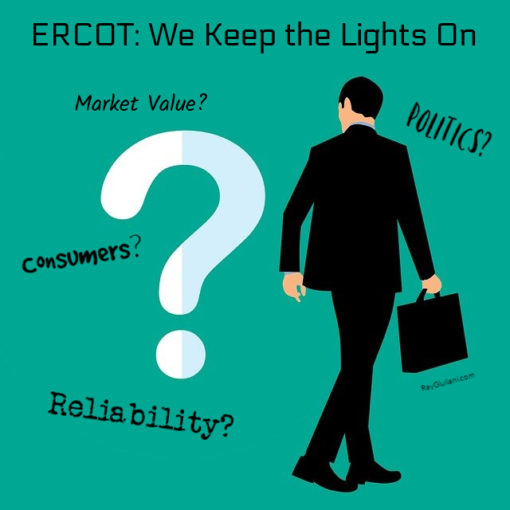 by Raymond Giuliani
by Raymond Giuliani
Looking for accountability at ERCOT? You won’t find much. There is a need to stay within the prescribed operating budgets, but the only generally accepted accountability at ERCOT is to follow the rules established by their stakeholder members.
Those stakeholder rules are the result of a never-ending process to both further the self-interests of the stakeholder members and to limit their exposure to any obligations to perform. In other words, stakeholders create rules to further their interests and protect themselves.
It is referred to as a quasi-government structure with an all-inclusive process of governance. Its goal is to establish and maintain a level playing field for wholesale and retail competition. To that point, some view the Texas electric power market as the best in the world. But stakeholders never fully dealt with credit concerns – the Achilles heel of any market operation. Instead of considering safeguards or alternative market mechanisms to deal with it ERCOT stakeholders simply buried their heads in the sand. The ERCOT $16 billion credit problem placed on the doorstep of legislators a few weeks ago was precisely as prescribed by the stakeholder governing process.
As to the physical operations of ERCOT members, after the February storm, it became painfully clear that there was no accountability for electric power reliability. ERCOT stakeholders were lulled to sleep by the generally accepted industry standard that blackouts were always short in duration and an acceptable risk in worst-case scenarios. ERCOT stakeholders fell out of sync with the changing environment. By February, 2021, almost half their winter peak generation was to come from facilities with intermittent fuel sources. Since dealing with harsh consequences for failure to perform was never on the table, the old standards were never updated for the new environment. It was no surprise that ERCOT and its stakeholder members were unprepared for the new definition of a worst-case scenario.
What we currently have is an ERCOT governance where stakeholders rule the roost with no consequences. Any notion of fiduciary responsibility is thrown out the window. Are we simply stuck with the ERCOT status quo of no accountability?
Raymond Giuliani, former Chief of Market Operations at ERCOT, has pulled back the curtain on the inner workings of ERCOT in his new book, The Stakeholders’ Golden Rule, available now at Barnes & Noble, Amazon, and Books A Million.




